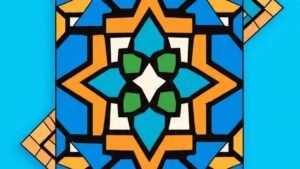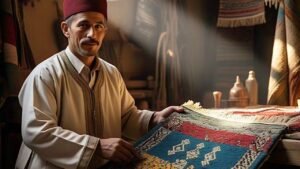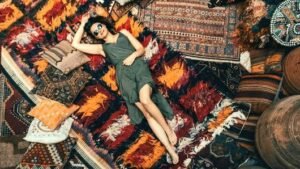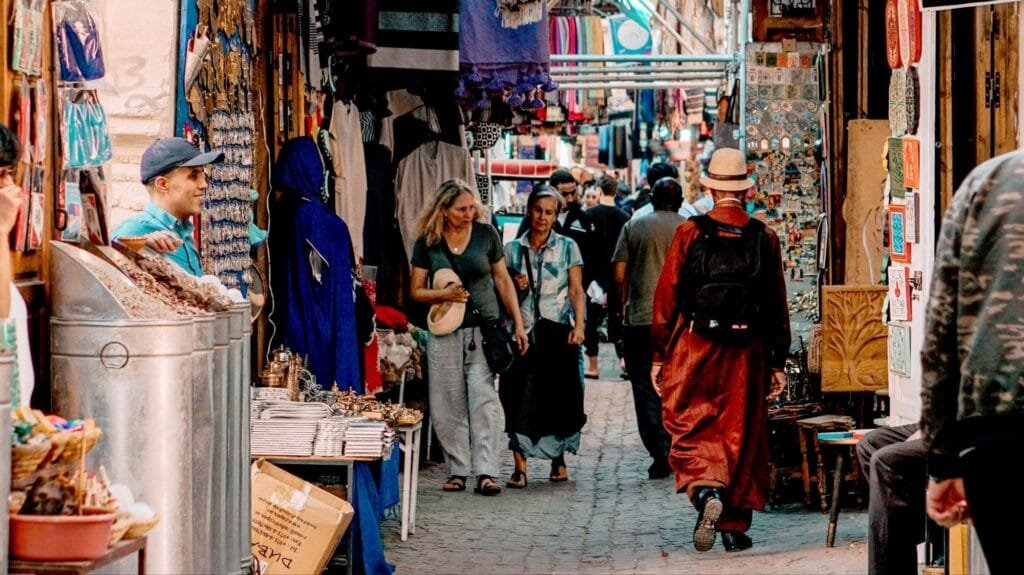
Moroccan crafts are a celebration of the country’s rich heritage. From intricate pottery to vibrant textiles, these handmade treasures reflect centuries of tradition. However, as demand for Moroccan crafts grows, so does the market for imitations. Knowing how to spot authentic Moroccan crafts has become crucial for those seeking genuine pieces. This guide explores the key elements that distinguish true Moroccan artistry, helping you make informed choices when purchasing these remarkable works.
Moroccan Crafts: How to Spot Pottery Imperfections
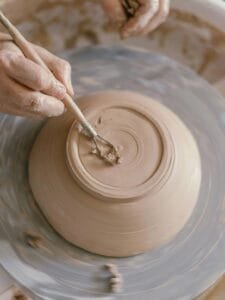
Moroccan pottery is world-renowned for its vibrant colors and intricate designs. The authenticity of these pieces lies in their imperfections. True Moroccan pottery is handmade, and no two pieces are identical. When examining pottery, you should look for small variations in shape, color, or pattern. These details are a sign that the item was crafted by hand, not mass-produced in a factory.
Another way to identify authentic Moroccan pottery is through its glaze. Traditional artisans use natural glazes that may not be as smooth or uniform as machine-made products. You might notice subtle differences in the gloss, and sometimes even minor cracks, known as “crazing.” These are not flaws but rather markers of authenticity, showing that the item was fired in a traditional kiln, using age-old techniques passed down through generations.
Lastly, always examine the base of the pottery. Authentic pieces will often have the artisan’s mark or the name of the workshop etched into the bottom. This is a stamp of pride and craftsmanship, ensuring that the piece you hold is truly Moroccan.
Moroccan Textiles: The Tale of Handwoven Threads
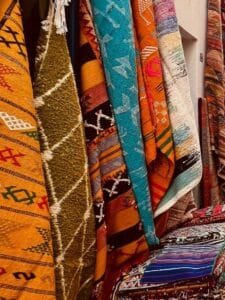
When it comes to textiles, Morocco offers a dazzling array of rugs, blankets, and fabrics. But how do you know if what you’re buying is authentic? The answer lies in the weave. Genuine Moroccan textiles, such as Berber rugs, are handwoven using traditional looms. Each piece tells a story, and the slightly uneven threads and irregular patterns are proof of human hands at work.
Synthetic materials and perfect symmetry are red flags when searching for authentic Moroccan crafts in textiles. Real Moroccan rugs, for example, are made from natural wool, cotton, or silk, and their textures are rich and varied. By touching the fabric, you can feel the difference. Authentic Moroccan rugs will have a distinct heft and softness that machine-made counterparts cannot replicate.
Pay attention to the dyes as well. True Moroccan artisans use natural dyes, derived from plants, minerals, and spices. These colors may fade slightly over time, adding to the rug’s charm and character. Machine-made textiles, on the other hand, often use synthetic dyes that result in overly bright or uniform hues. The colors in an authentic Moroccan craft will reflect the earthiness of the country’s landscape—subtle, rich, and alive.
Moroccan Crafts: The Beauty of Handcrafted Metalwork
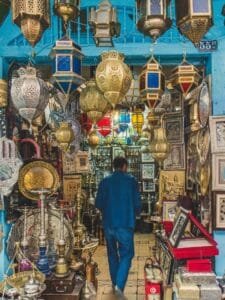
Moroccan metalwork is another area where authenticity can shine through. Whether it’s a delicately engraved lantern or an intricately designed teapot, genuine Moroccan metalwork reveals itself in the details. Handcrafted metal pieces are often created using traditional tools, with every cut and engraving done by skilled artisans. If you look closely, you can spot tiny variations in the patterns, which are signs of authenticity.
Mass-produced items tend to have perfect, repetitive designs, lacking the soul of handmade pieces. The process of making authentic Moroccan metalwork, especially in cities like Fes, involves hammering the metal into shape and then engraving intricate designs by hand. This results in a more textured and less uniform finish, with the artisan’s touch clearly visible in the piece.
Authentic Moroccan metalwork is often made from brass, copper, or silver. The weight of the object can give you a clue—genuine pieces feel solid and substantial. Cheap, mass-produced items often use lightweight metals or even plastic disguised as metal. If the object feels too light or flimsy, it is likely an imitation rather than an authentic Moroccan craft.
Moroccan Leather: The Scent and Feel of Tradition
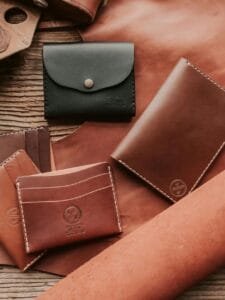
Leather goods from Morocco, particularly from cities like Marrakech and Fes, are world-famous. Authentic Moroccan leather, often referred to as “Moroccan tanned leather” or “Moroccan saffron leather,” is easily distinguishable by its quality and craftsmanship. Artisans use traditional methods to tan the leather, giving it a unique texture and scent that mass-produced items cannot match.
When searching for authentic Moroccan leather, use your senses. The smell of real Moroccan leather is earthy and natural, the result of vegetable-based tanning processes. Mass-produced leather often smells of chemicals due to modern tanning techniques. Authentic Moroccan leather also has a natural texture, with slight variations in color and feel that signal the work of an artisan rather than a machine.
Examine the stitching as well. Handmade Moroccan leather goods, whether they are bags, slippers, or belts, will have slight irregularities in the stitching. This is a sign that the item was crafted by hand, not mass-produced. The edges of authentic leather products are often left raw, showing the quality of the leather itself. In contrast, machine-made products may have overly smooth, polished edges that lack the character of true Moroccan leather.
Wooden Moroccan Crafts: Hand-Carved Wonders

Moroccan woodwork, from intricate screens to delicate furniture, is another area where authenticity matters. Real Moroccan wooden crafts are carved by hand, often from cedar or walnut, using traditional tools. The time and skill required to create these pieces result in unique, detailed works of art that cannot be replicated by machines.
When identifying authentic Moroccan wooden crafts, look closely at the carvings. Hand-carved pieces will show small inconsistencies in the patterns, which are signs of an artisan’s work. Machine-carved wood will have a uniform appearance, with repetitive designs that lack depth and character. Authentic Moroccan woodwork often features intricate geometric patterns, inspired by Islamic art, and the depth of the carvings is a good indicator of the piece’s authenticity.
The finish on authentic Moroccan woodcrafts is also telling. Artisans use natural oils and polishes, which enhance the wood’s natural beauty without overpowering it. If the finish looks too glossy or plastic-like, it may be a mass-produced item rather than an authentic Moroccan craft. The natural grain of the wood should be visible and celebrated in genuine pieces, adding to their charm and appeal.
Conclusion
Recognizing authentic Moroccan crafts requires a keen eye and appreciation for the artistry involved. Whether it’s pottery, textiles, metalwork, leather, or wood, the beauty of these crafts lies in their imperfections, their story, and the hands that made them. By understanding these elements, you can confidently choose authentic pieces that carry the true spirit of Moroccan culture.

